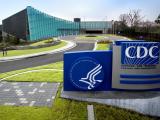Apr 14, 2011 (CIDRAP News) – The Centers for Disease Control and Prevention (CDC) recently released a set of standards for public health preparedness capabilities to help state and local public health agencies set priorities and strategies in an age of budget-cutting.
The 140-page document, titled "Public Health Preparedness Capabilities: National Standards for State and Local Planning," was in preparation for more than a year before it was quietly posted on the CDC's Web site in late March.
The guidance is the first of its kind from the CDC, said Dave Daigle, a spokesman for the CDC's Office of Public Health Preparedness and Response.
He said the guidelines are intended to help public health agencies at all levels. "One of the key challenges is the budget and fiscal times we're in, and we're hoping that this document will help them as things get tough," he said.
The CDC provides funds and technical assistance to state, local, and territorial health departments through the Public Health Emergency Preparedness (PHEP) cooperative agreement program, the document notes. PHEP grants have totaled about $700 million annually in recent years.
But that funding has been declining, causing public health officials to worry about their ability to maintain the preparedness gains they made with the help of federal support provided in the aftermath of the 2001 terrorist attacks, the report says.
"State and local planners likely will need to make difficult choices about how to prioritize and ensure that federal dollars are directed to priority areas within their jurisdictions," it states.
The CDC developed the new guidelines in response to those concerns and in preparation for a new 5-year PHEP cooperative agreement that will take effect in August. More than 200 experts from the CDC, other federal agencies, and a number of professional organizations helped prepare the guidelines.
The document covers 15 preparedness capabilities, in five categories:
- Biosurveillance: public health lab testing; public health surveillance and epidemiologic investigation
- Community resilience: preparedness, recovery
- Countermeasures and mitigation: countermeasures dispensing, medical materiel management and distribution, nonpharmaceutical interventions, responder safety and health
- Incident management: emergency operations coordination
- Information management: emergency public information and warning, information sharing
- Surge management: fatality management, mass care, medical surge, volunteer management
The guidelines say that health agencies should prioritize capabilities on the basis of their own risk assessments, but they are "strongly advised" to make sure they first have capabilities in six areas: biosurveillance, community resilience, countermeasures and mitigation, incident management, and information sharing.
Daigle said the guidelines probably don't contain anything that's new to people in public health, since groups like the National Association of County and City Health Officials and the Association of State and Territorial Health Officials were involved in writing them.
"I wouldn't think that there's something we're springing on them," he said.
He said the guidelines should be helpful for public health in general, not just emergencies. "People think of preparedness as emergency response, but really preparedness is an everyday investment. If you invest in lab capacity, it's not just for emergencies; it's an everyday investment."
See also:
CDC preparedness standards guidelines
Sep 21, 2010, CIDRAP News story "CDC says state and local preparedness improving"


















